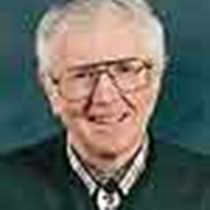Princess Louisa Inlet, British Columbia
Travelers around the world have heard about the legendary beauty of Princess Louisa Inlet.
Today we had this glacial fiord with towering sculpted turrets, coastal rain forest flanks, leaping cascades and eternal snowfields to ourselves and the harlequin ducks, marbledMurrelets and harbor seals.
Capt. Scott Carden brought us through Malibu Rapids, the keyhole that opens Princess Louisa Inlet, at the top of the flood tide. We spent the day and departed at evening in that next brief interval of slack water on the low ebb tide. At all other times the tide races so fast here, that a ship can loose leeway and control.
Capt. Geo. Vancouver passed, but never entered Princess Louisa, in 1792 while on his final search for the fabled Northwest Passage. This series of reaches deep into the Coast Range briefly led him to believe he’d found that passage.
The entry arm, Jervis Inlet, he named for his admiral in London, but it’s best noted on the charts for its 400-fathom depth. That’s 2,400 feet deep! Above the waterline the fiord walls soar to 8,000 feet where we looked up at the summit of Mt. Prince Albert. The depth and scope of the massive Cordilleran glaciers that incised these inland passageways from here north through Southeast Alaska is dramatically illustrated in Princess Louisa Inlet.
As often happened with British naval officers exploring this coast, geographic names were given for royal family members who were never here, or much less aware of this wilderness. After Jervis Inlet comes Prince of Wales Reach, Princess Royal Reach, Queens Reach, the six highest peaks for Queen Victoria’s children, and Princess Louisa Inlet for German Princess Victoria Maria Louisa of Saxe Coburg, Duchess of Kent and the mother of Queen Victoria.
Through the morning we explored in the Zodiacs which nudged the sheer walls, paused with motors off so we could absorb a great silence, muted waterfall sounds and then Chatterbox Falls.
Our afternoon was more Zodiac cruising and kayaking and hikes to the base of Chatterbox Falls wreathed in its own mist. This early in the season we also had the best floral aspect including bleeding heart, bishop’s caps, fairy bells and salmon berry under ancient western red cedars.
The falls were named by a former soldier, prospector, business investor, world traveler and yachtsman who found his final destination here in 1927. James “Mac” McDonald homesteaded the tiny bench and area around the fall, built a peeled cedar log lodge and entertained the growing parade of yachters who sought this special place. McDonald said he was “caretaker to the most beautiful spot in the world.”
His last season here was 1972. McDonald’s ashes are under a plaque dedicated to him in this Princess Louisa Marine Provincial Park he gifted to all people to enjoy.
Travelers around the world have heard about the legendary beauty of Princess Louisa Inlet.
Today we had this glacial fiord with towering sculpted turrets, coastal rain forest flanks, leaping cascades and eternal snowfields to ourselves and the harlequin ducks, marbledMurrelets and harbor seals.
Capt. Scott Carden brought us through Malibu Rapids, the keyhole that opens Princess Louisa Inlet, at the top of the flood tide. We spent the day and departed at evening in that next brief interval of slack water on the low ebb tide. At all other times the tide races so fast here, that a ship can loose leeway and control.
Capt. Geo. Vancouver passed, but never entered Princess Louisa, in 1792 while on his final search for the fabled Northwest Passage. This series of reaches deep into the Coast Range briefly led him to believe he’d found that passage.
The entry arm, Jervis Inlet, he named for his admiral in London, but it’s best noted on the charts for its 400-fathom depth. That’s 2,400 feet deep! Above the waterline the fiord walls soar to 8,000 feet where we looked up at the summit of Mt. Prince Albert. The depth and scope of the massive Cordilleran glaciers that incised these inland passageways from here north through Southeast Alaska is dramatically illustrated in Princess Louisa Inlet.
As often happened with British naval officers exploring this coast, geographic names were given for royal family members who were never here, or much less aware of this wilderness. After Jervis Inlet comes Prince of Wales Reach, Princess Royal Reach, Queens Reach, the six highest peaks for Queen Victoria’s children, and Princess Louisa Inlet for German Princess Victoria Maria Louisa of Saxe Coburg, Duchess of Kent and the mother of Queen Victoria.
Through the morning we explored in the Zodiacs which nudged the sheer walls, paused with motors off so we could absorb a great silence, muted waterfall sounds and then Chatterbox Falls.
Our afternoon was more Zodiac cruising and kayaking and hikes to the base of Chatterbox Falls wreathed in its own mist. This early in the season we also had the best floral aspect including bleeding heart, bishop’s caps, fairy bells and salmon berry under ancient western red cedars.
The falls were named by a former soldier, prospector, business investor, world traveler and yachtsman who found his final destination here in 1927. James “Mac” McDonald homesteaded the tiny bench and area around the fall, built a peeled cedar log lodge and entertained the growing parade of yachters who sought this special place. McDonald said he was “caretaker to the most beautiful spot in the world.”
His last season here was 1972. McDonald’s ashes are under a plaque dedicated to him in this Princess Louisa Marine Provincial Park he gifted to all people to enjoy.




